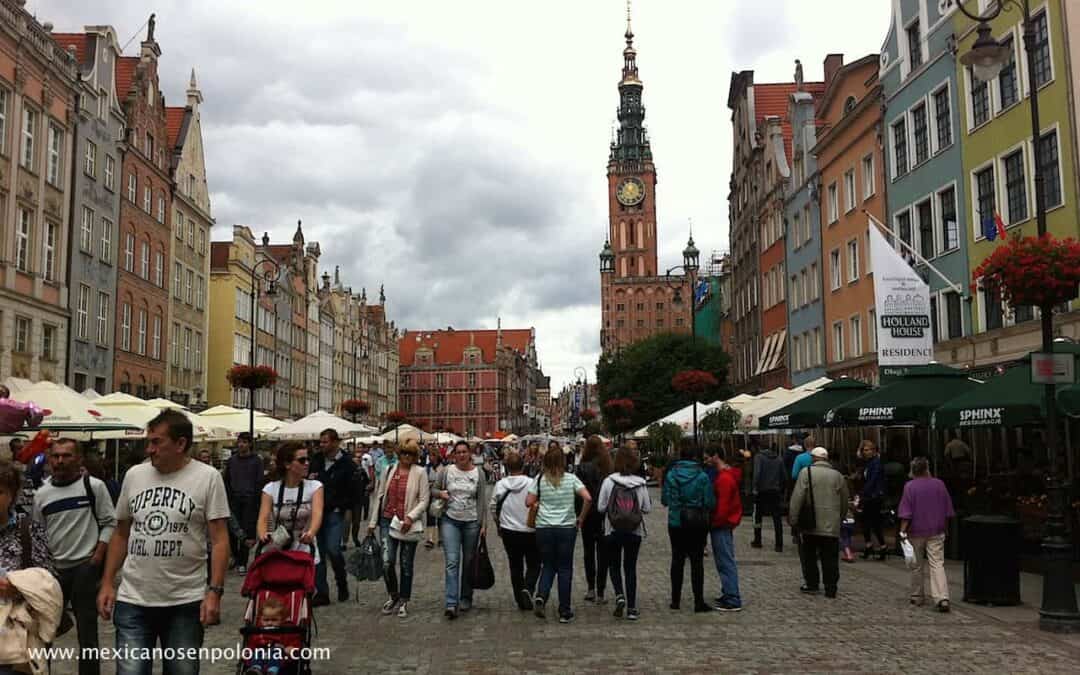It is important to make a distinction between a tourist visa and the visa-free movement: a tourist visa is a document issued by the Polish embassy for a chosen period, while the visa-free movement refers to the possibility of entering a country just with your passport for some specific time (defined by international agreements between countries).
Visa-free movement
When entering Poland, you also enter the Schengen Area. If you are a citizen of any of the following countries, you can enter the Schengen Zone (and therefore Poland) for a maximum of 90 days within 180 days:
Argentina | Brazil | Chile | Guatemala | Honduras | Colombia | Costa Rica | Mexico | Nicaragua | Panama | Paraguay | Peru | Salvador | United States of America | Uruguay | Venezuela
Example: You arrived in Poland for the first time on March 1st. You can stay in Poland and the Schengen Area until May 30 (90 days), and then you need to leave the Schengen area for at least 90 days, before coming back again.
All you need is a valid passport that remains valid for at least six months after the date of your return from Europe
Re-entering Poland and extending the visa-free stay
There exist some additional rules that allow citizens of selected countries to re-enter Poland in the visa-free movement without having to comply with the 180-day limit – which means that every time they enter Poland, they have another visa-free 90 days. These rules have been set in individual bilateral agreements made between Poland and those countries before Poland entered the EU. This applies to the citizens of the following countries:
Argentina | Chile | Honduras | Costa Rica | Mexico | Panama | United States of America | Uruguay
Example: You arrived in Poland for the first time on March 1st. You can stay in Poland and the Schengen Area until May 30 (90 days). If you leave Poland on May 27 and then enter Poland again on May 28, you will once again have 90 days of visa-free stay in Poland (important: only in Poland. If you travel to any other Schengen country after May 30, you may be detained and deported for not complying with the 90-180 rule). Make sure you have a proof of re-entering Poland, such as a stamp in your passport.
Details of the bilateral agreement between Poland and Mexico can be found here.
When entering the Schengen Zone in a visa-free movement, make sure you:
- have a valid travel document, e.g. a passport (that remains valid for at least six months after the planned date of your return from Europe!)
- can explain the purpose of your trip and plans for travel
- can prove when and how you are planning to leave the Schengen area (e.g. a return plane ticket)
- have sufficient financial resources to fund your trip (e.g. a bank statement from at least 3 last months, a credit card, cash, etc.). Every Schengen country applies different rules as to how much funds you should have. In Poland, it is at least 75 PLN for every day of your stay + 2500 PLN in case you don’t have a flight to your home country yet
Visas
Visas are issued by a Polish consul, so to obtain one contact the Polish Embassy in your country. There are a couple of visa types:
- Schengen Visa (C) – issued for a stay that does not exceed 90 days within a 180 day period (which is an alternative for visa-free movement)
- National visa (D) – issued for a stay that lasts longer than 90 days, but less than 1 year
For information regarding visas for Mexican citizens, visit this website.
For information regarding visas for other nationals, visit this website.
Sources:

